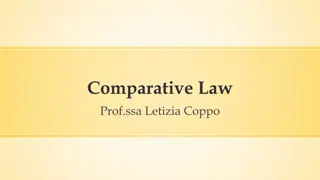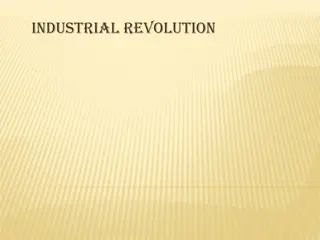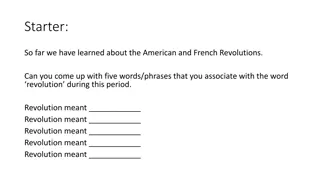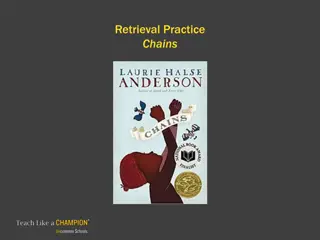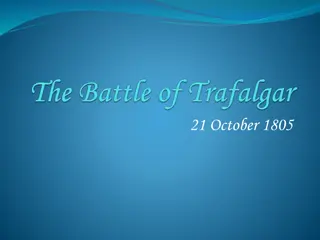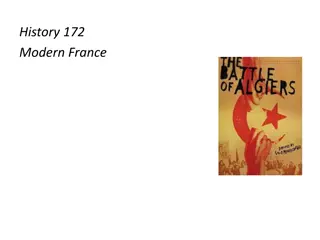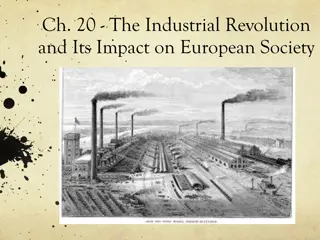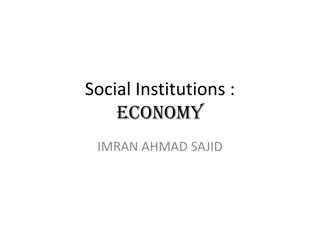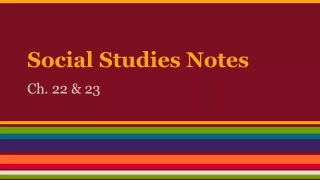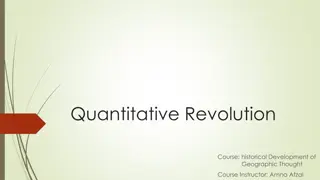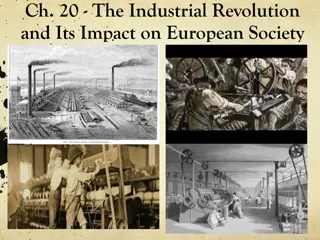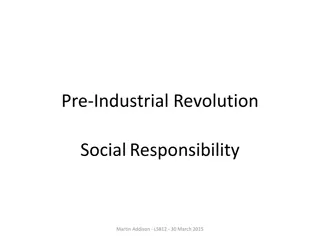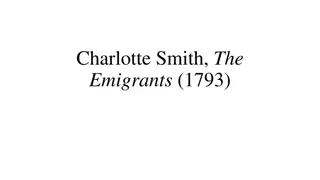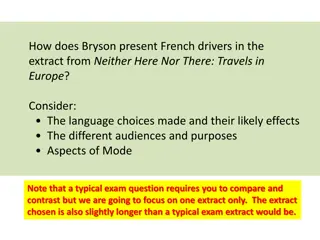The French Revolution and Napoleon: Unfolding of a Historic Era
The French Revolution, marked by political crises, revolts, and the rise of Napoleon, unfolded through phases of moderation, radicalism, and reaction. Peasants revolted against nobles, Paris became a revolutionary center, and the National Assembly acted to end aristocratic privileges. Explore the tumultuous events that shaped France from 1789 to 1815.
Download Presentation

Please find below an Image/Link to download the presentation.
The content on the website is provided AS IS for your information and personal use only. It may not be sold, licensed, or shared on other websites without obtaining consent from the author. Download presentation by click this link. If you encounter any issues during the download, it is possible that the publisher has removed the file from their server.
E N D
Presentation Transcript
The French Revolution and Napoleon The French Revolution Unfolds
Political Crisis to Revolt French Revolution divided into different phases Moderate Phase of the National Assembly (1789-1791) The Radical Phase (1792-1794)- included end of monarchy and Reign of Terror The Directory (1795-1799)- period of reaction against extremism Age of Napoleon (1799-1815)
Political Crisis to Revolt Political crisis of 1789 coincided with worst famine in memory As grain prices soared, people with jobs had to spend 80% of income on bread Rumors ran wild setting off was is eventually called the Great Fear Rumors of attacks of villages and royal troops seizing crops led to panic
Political Crisis to Revolt Inflamed by hunger and fear, peasants revolted against nobles trying to reimpose medieval dues Peasants set fires and stole grain from storehouses Riots clearly demonstrated peasant frustration with an unjust regime
The Paris Commune Paris was the chief revolutionary center of France Factions began to compete to gain power in the revolutionary ranks Moderates looked to the Marquis de Lafayette who headed the National Guard Largely middle-class militia organized in response to the arrival of royal troops in Paris First group to don the revolutionary tricolor red, white, and blue badge
The Paris Commune The Paris Commune, a more radical group, took over the Paris government from the royal government Mobilized entire neighborhoods for protests or violent action to further the revolution Other clubs- some even more radical-sprang up spreading rumors about the royal family and court
The National Assembly Acts Peasant uprising and the storming of the Bastille forced the National Assembly to act On August 4, nobles in the assembly voted to end their own privileges Manorial dues Hunting rights Special legal status Exemption from taxes
The National Assembly Acts It is agreed the nobles didn t give up anything they hadn t already lost, but the National Assembly turned these reforms into law Late August: Assembly took first steps toward a constitution issuing the Declaration of the Rights of Man and the Citizen
Declaration of the Rights of Man Modeled in part on the American Declaration of Independence Declared all men were born free and had equal rights Enjoyed natural rights to life, liberty and property Insisted government was established to protect people s natural rights
Declaration of the Rights of Man Proclaimed all male citizens were equal before the law Called for freedom of religion and for taxes to be levied based on ones ability to pay Did not grant women equal citizenship 1791: Olympe de Gouges wrote the Declaration of the Rights of Woman and the Female Citizen- wanted equal rights for women and men
Women March on Versailles October 5: 6,000 women march from Paris to Versailles shouting Bread and demanded to see the king Much of their anger directed toward Queen Marie Antoinette Though she was kind to the poor, her lavish lifestyle overshadowed her acts Resistant to the reforms Demanded the king return to Paris, which he eventually agreed to, returning with the women to Paris Next 3 years king spent as virtual prisoner
National Assembly Presses On National Assembly followed the king to Paris Members worked to draft a constitution and solve the financial crisis To pay off huge debt, members voted to take over and sell off church lands
The Church Under State Control In 1790, the National Assembly put the French Catholic Church under state control Passed the Civil Constitution of the Clergy Bishops became elected, salaried officials and papal authority over the French Church was ended
The Church Under State Control Assembly dissolved convents and monasteries Many bishops and priests refused to accept the Civil Constitution Many peasants who were religiously conservative became angered at the revolutionary government A gulf between revolutionary Paris and the peasants formed when clergy was punished for not supporting the Civil Constitution
The Constitution of 1791 1791: National Assembly completes its main task of producing a constitution Set up a limited monarchy to replace the absolute monarch Legislative Assembly had the power to make laws, collect taxes, and decide on issues of war and peace
The Constitution of 1791 Lawmakers elected by tax-paying men over the age of 25 Replaced old provinces with 83 departments of relatively equal size Abolished old provincial courts To moderates it reflected Enlightenment goals and ended Church interference in government
Louiss Attempted Escape Marie Antoinette and others attempted to urge the king to escape In June 1791 the king, queen, and their children attempted to escape in disguise The attempted escape failed and the royal family was escorted back to Paris, proving to some that the king was a traitor to the revolution
Rulers Fear the Revolution The Revolution aroused debates around Europe Followers of the Enlightenment applauded the National Assembly and their reforms while monarchs and nobles denounced the Revolution European rulers increase border patrols to stop the spread of the French plague
Rulers Fear the Revolution French emigres (nobles, clergy, and others who had fled France and the revolutionary forces) spread horror stories to other countries European ruler began turning against France Edmund Burke, a British writer who praised the American Revolution, condemned the revolutionaries in Paris
Threats From Abroad In August 1791 after Louis s failed escape, the king of Prussia and the emperor of Austria (Marie Antoinette's brother) issued the Declaration of Pilnitz
Threats From Abroad Declaration of Pilnitz Declared king of Prussia and emperor of Austria would protect the French monarchy Though the threat may have been a bluff, revolutionaries took it seriously and prepared for war
Radicals Fight for Power The Legislative Assembly took office in October 1791 (lasted less than a year) As prices continued to rise and food became scare, working class men and women (called sans-cullotes) pushed the revolution in a more radical direction Began demanding a republican government
Radicals Fight for Power Within the Legislative Assembly, hostile factions competed for power The sans-cullottes found support among radicals like the Jacobins (a revolutionary club of mostly middle class lawyers or intellectuals) Moderate reformers and political officials opposed the radicals and wanted no more reforms
War on Tyranny In April 1792 the Legislative Assembly declared war to spread revolutionary ideas and end tyranny abroad Declared war on Austria, then Prussia and Britain Although the European powers believed they would defeat France due to the turmoil of the revolution, fighting would continue on-and-off until 1815




